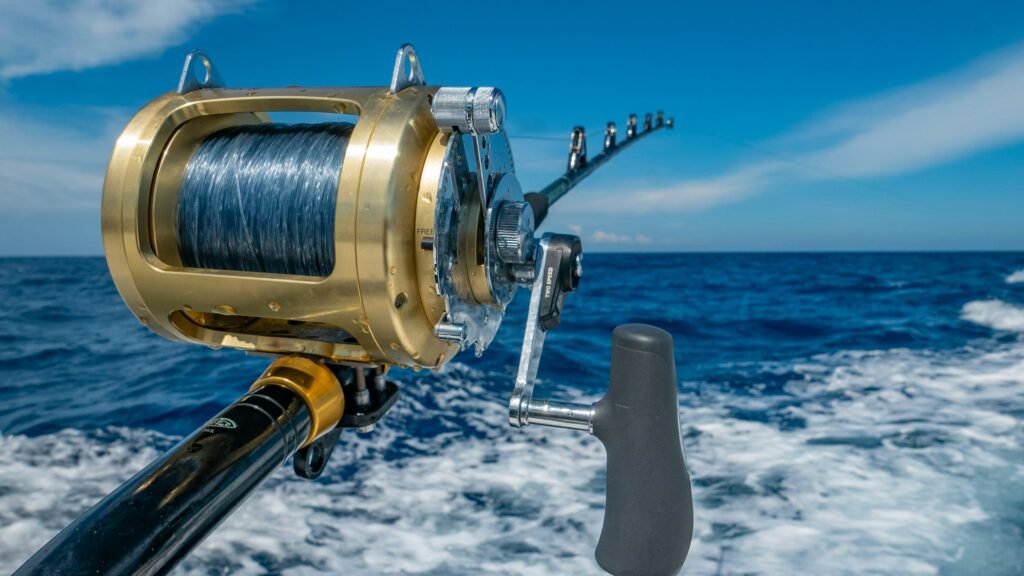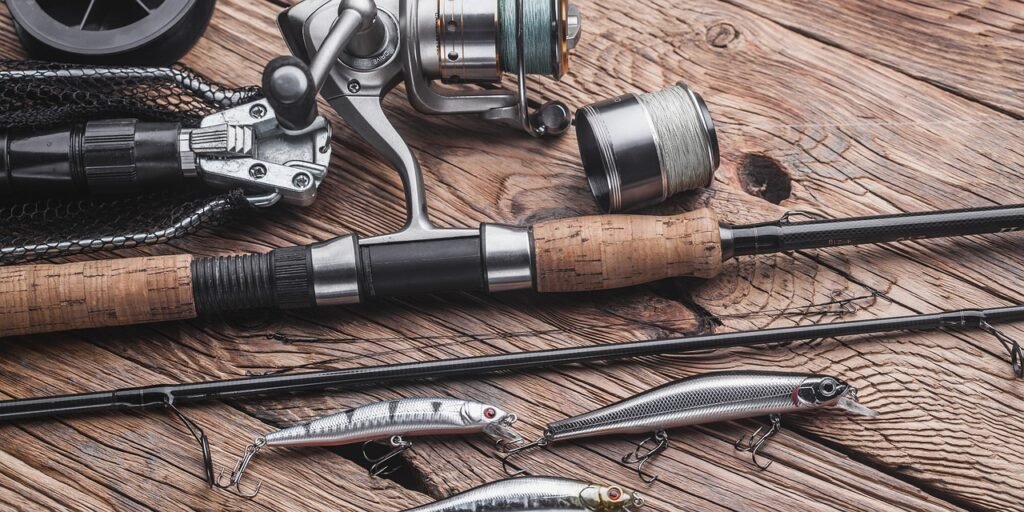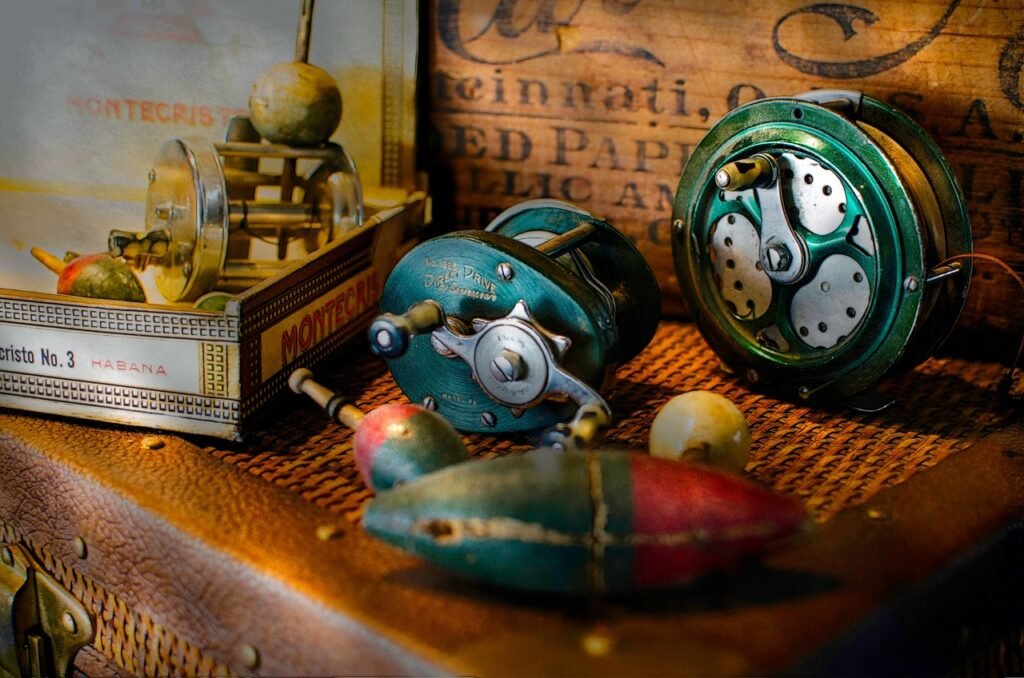Fishing is a blend of art and science, where technique meets technology. One of the most crucial components of your fishing gear is the drag system in your fishing reel. While it might seem like a technical detail, mastering your reel’s drag system can significantly impact your fishing success. Today, we’re diving into the world of drag systems, exploring how they work, their types, and the best options available on the market.
What is a Drag System?
Imagine you’re out on a serene lake, casting your line into the sparkling water, surrounded by the gentle sounds of nature and the occasional ripple on the surface. The morning sun casts a golden hue on the placid water, and the air carries a refreshing, crisp scent. Suddenly, you feel a tug—a fish bites! The excitement surges through you, but you’re calm because you know your equipment is up to the challenge.
The drag system in your fishing reel is what prevents the line from snapping when the fish pulls with all its might. This sophisticated mechanism allows the reel to release some line under tension, giving the fish a bit of leeway while you maintain control. Without it, the sudden forceful pulls of a determined fish could easily break the line, resulting in a lost catch and a frustrated angler.
In essence, the drag system acts as a brake. It applies resistance to the spool and lets the line out gradually, preventing breakage from abrupt forces. This feature is critical whether you’re fishing in freshwater lakes, rivers, or even in the challenging conditions of saltwater environments. It helps protect not only your line but also ensures that you can eventually reel in your catch without unnecessary strain or breakage. The drag system’s importance cannot be overstated; it’s the unsung hero that makes successful fishing possible, allowing you to savor every moment of the fight and the eventual triumph.
Types of Drag Systems
1. Friction Drag Systems
Friction drag systems are the most common type of drag systems, especially prevalent in spinning reels. These systems utilize friction discs or washers that press against the spool to create resistance, thus controlling the line’s release during a fish’s run. The materials of these friction discs can range from felt to advanced carbon fiber, each material influencing the drag performance and smoothness in different ways.
- Felt Washers: These are standard in many entry-level reels. Felt washers are known for their smooth operation and consistent drag performance, providing anglers with a dependable fishing experience. However, they tend to wear out quickly, particularly in harsh saltwater environments, which can lead to a decrease in performance over time. Regular maintenance and replacement are necessary to keep them in optimal condition.
- Carbon Fiber Washers: Carbon fiber washers are highly durable and offer an incredibly smooth drag experience. They are commonly found in high-performance reels and are built to withstand more demanding conditions, including saltwater and heavy-duty fishing scenarios. Carbon fiber provides a more durable and reliable option, ensuring that the drag system remains effective over a longer period, even under continuous use.
2. Centrifugal Drag Systems
Centrifugal drag systems are typically used in baitcasting reels. These systems rely on centrifugal force to create resistance. When the spool spins during a cast, brake blocks inside the reel move outward due to the centrifugal force and press against the brake ring to control the spool’s speed. This helps in reducing the chance of backlash and providing a smoother casting experience.
- Shimano Curado DC: This model incorporates digital control braking, which takes centrifugal braking to the next level. The digital control system finely tunes the application of centrifugal force, offering anglers precise control over the casting process. This advanced system significantly reduces backlash and enhances casting accuracy, making it a favored choice among experienced anglers who seek both precision and performance.
Summary
Whether you choose friction or centrifugal drag systems, understanding the materials and technologies behind them can greatly enhance your fishing experience. Each type offers unique benefits and is suited to different fishing styles and conditions. Regular maintenance and choosing the right drag system for your needs can make a significant difference in your angling success.
These systems are also found in baitcasting reels. They use magnets to create resistance against the spool. Magnetic drag systems offer easy adjustment and are great for beginners because they reduce the risk of backlashes.
- Abu Garcia Revo SX: Known for its MagTrax brake system, this reel offers consistent drag pressure and is incredibly user-friendly.
How to Set Your Drag
Setting your drag correctly is essential for a successful fishing trip. Proper drag adjustment ensures that you can effectively battle fish without the risk of breaking your line or losing your catch. Too tight, and the line might snap; too loose, and the fish could get away. Here’s a detailed method to set your drag for optimal performance:
- Tighten the Drag: Start by tightening the drag knob on your reel. For spinning reels, the drag knob is usually at the top of the spool, while for baitcasting reels, it’s typically located on the side. Make sure you understand your reel’s specific design as this will help you locate and adjust the drag mechanism correctly.
- Test the Resistance: Next, pull the line with your hand to test the resistance. A good rule of thumb is to set the drag to about 25-30% of the line’s breaking strength. For instance, if you’re using a 20-pound line, aim for the drag to be around 5-7 pounds. You can use a small scale to measure the resistance, ensuring a more precise setting.
- Fine-Tune: Adjust the drag knob to fine-tune the resistance. It’s generally better to have the drag slightly on the loose side and then tighten it during the fight if necessary. This approach allows you to adapt to the fish’s strength and sudden movements without risking over-tensioning the line.
- Consider Environmental Factors: Remember that water conditions, such as current and depth, can affect drag performance. Adjust your drag accordingly if you notice changes in these conditions during your fishing trip.
- Practice Regular Checks: Periodically check and adjust your drag throughout the day. Environmental factors and the wear and tear on your equipment can alter the initial settings.
Proper drag setting can make a significant difference in your fishing success, allowing you to enjoy the thrill of the catch without unnecessary losses. Happy fishing!
Recommended Brands and Models
Spinning Reels
- Penn Battle II: Known for its durability and smooth drag system, this reel is excellent for both beginners and seasoned anglers. It is constructed with a full metal body, side plate, and rotor, ensuring longevity and reliable performance even under heavy usage.
- Daiwa BG: Featuring a carbon ATD drag system, it provides smooth and consistent drag pressure, perfect for battling big freshwater fish. The aluminum body and Digigear system enhance the reel’s strength and durability, making it a favorite among serious anglers looking for reliability and power.
Baitcasting Reels
- Shimano Curado K: This reel offers a combination of centrifugal and magnetic drag systems, making it versatile and reliable. The durable construction and smooth operation ensure consistent performance, whether you’re fishing in freshwater or saltwater environments.
- Lew’s Speed Spool LFS: Known for its ease of use and adjustable magnetic drag system, it’s great for anglers at any skill level. With its lightweight design and high-speed retrieve, this reel is perfect for those looking to improve their casting accuracy and overall fishing experience.
A Comparative Table Based on The Information Provided:
| Drag System Type | Description | Best For | Popular Brands and Models |
| Friction Drag Systems | Utilizes friction discs or washers to create resistance against the spool, controlling line release during a fish’s run. | Spinning reels, versatile applications | Penn Battle II, Daiwa BG |
| Centrifugal Drag Systems | Relies on centrifugal force to create resistance, with brake blocks pressing against a brake ring to control spool speed, reducing the chance of backlash. | Baitcasting reels, reducing backlash | Shimano Curado DC, Lew’s Speed Spool LFS |
| Magnetic Drag Systems | Uses magnets to create resistance against the spool, offering easy adjustment and reducing the risk of backlashes, suitable for beginners. | Baitcasting reels, beginner-friendly | Abu Garcia Revo SX |
| Recommended Models | High-quality fishing reel models known for their reliable drag systems and overall performance. | Various fishing scenarios and skill levels | Penn Battle II, Daiwa BG, Shimano Curado K, Lew’s Speed Spool LFS |
Final Thoughts
Understanding and mastering the drag system in your fishing reel can make the difference between landing the catch of a lifetime and going home empty-handed. By familiarizing yourself with the different types of drag systems and knowing how to set them correctly, you’ll be better prepared to handle whatever comes your way on the water.
Remember, practice makes perfect. Spend some time adjusting and testing your drag settings before you hit the water. And most importantly, enjoy the process. Fishing is as much about the journey as it is about the catch.
For those ready to take their fishing skills to the next level, consider investing in high-quality reels from trusted brands like Shimano, Penn, and Daiwa. These companies offer advanced drag systems that can help you perfect your technique and increase your chances of success.
Happy fishing, and may your lines be tight and your catches plenty!




Jogar slot online na Microstar88 é muito fácil e divertido! Tem pra todos os gostos e bolsos. Experimentei vários e adorei! slot online